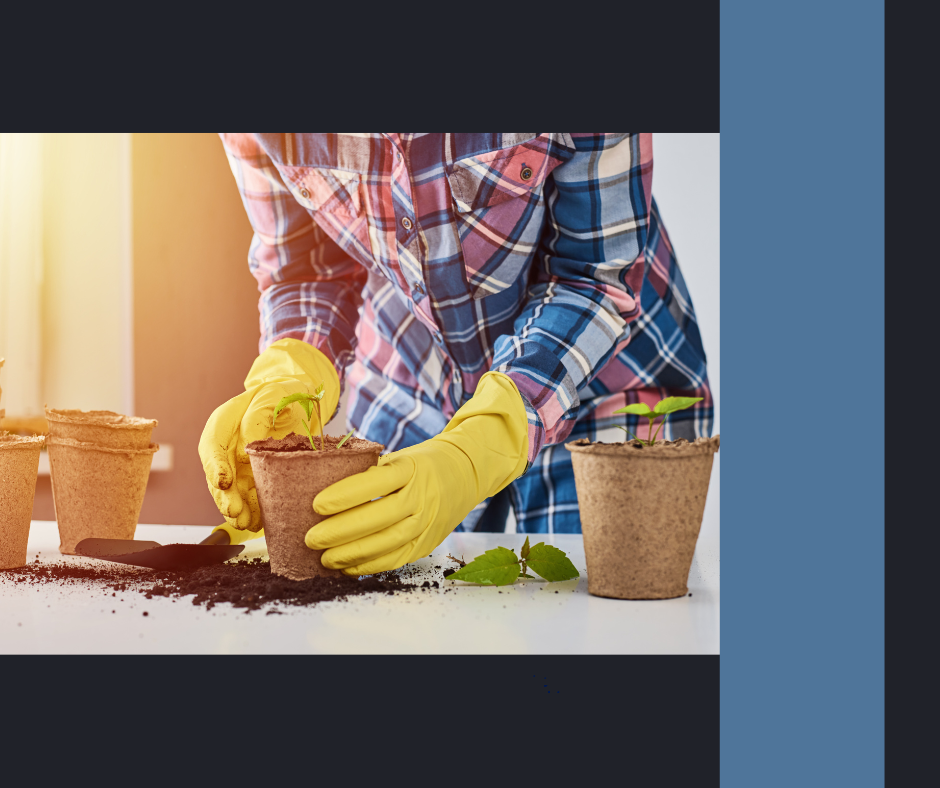
How to Grow Food in Pots: A Simple Guide to Container Gardening
Share
Think you need a backyard to grow your own food? Think again. Whether you live in an apartment, have limited yard space, or just want to keep things simple, container gardening is a powerful (and practical) way to start producing your own food—right from your porch, patio, or balcony.
Here’s how to get started:
1. Start with the Right Pots
You don’t need fancy containers—just ones with good drainage. Plastic, terracotta, fabric grow bags, or even recycled buckets can all work. Bigger is often better: larger pots hold more soil, which means more nutrients and less frequent watering.
Quick tip: Drill extra holes in the bottom if you're reusing old containers. Plants hate soggy roots.
2. Use High-Quality Soil
Skip the cheap dirt from the yard. Your plants need nutrient-rich potting mix made for containers. Look for soil that drains well but retains moisture. Add compost if you can—it boosts nutrients and keeps your soil healthy.
3. Choose the Right Crops
Not everything loves life in a pot, but lots of foods do.
Easiest veggies for pots:
- Leafy greens (lettuce, spinach, kale)
- Radishes
- Carrots (look for short varieties)
- Peppers
- Cherry tomatoes
- Green onions
- Bush beans
Compact fruits:
- Strawberries
- Dwarf blueberries (in acidic soil)
- Patio tomatoes
Herbs that thrive in containers:
- Basil
- Mint (keep it in its own pot!)
- Chives
- Parsley
- Thyme
- Rosemary
4. Give Them Sunlight
Most veggies need 6–8 hours of direct sunlight a day. Leafy greens can tolerate partial shade, but fruiting plants like tomatoes and peppers need full sun to thrive. Use rolling plant caddies or rotate your pots if needed.
5. Water Consistently
Potted plants dry out faster than in-ground gardens. Water when the top inch of soil feels dry. In hot weather, that might mean daily watering—especially for smaller pots.
Bonus tip: Add mulch (like straw or wood chips) on top of the soil to keep moisture in and weeds out.
6. Feed Your Plants
Since nutrients wash out of containers faster, fertilize every 2–4 weeks with compost tea or an organic liquid fertilizer. Your plants will reward you with better growth and higher yields.
7. Keep an Eye Out for Problems
Check your plants often. Yellowing leaves, stunted growth, or pests (like aphids or caterpillars) can show up quickly in containers. The good news? They’re usually easier to treat than in a large garden.
Grow What You Eat
Start with foods you already love and use often. A few pots of tomatoes and basil can turn into homemade pasta sauce. A small herb garden means fresh flavor all year.
Container gardening proves you don’t need land to be food-secure—you just need a little space, some sunshine, and a willingness to grow.
No fuss. No fluff. No fear.
To learn more about growing food indoors check out this article.
To learn about growing a garden, check out this article.
To learn about herbs to grow in your garden for health and flavor, check out this article.
To learn about how to prep in small spaces, even apartments, check out this article.
